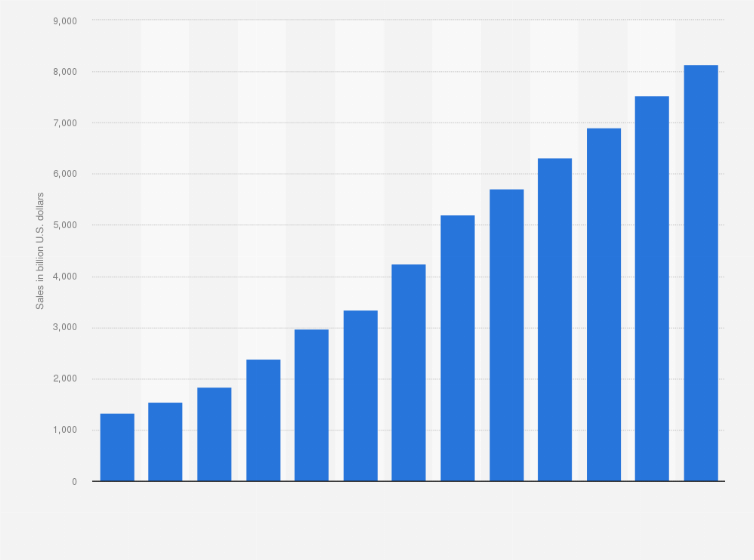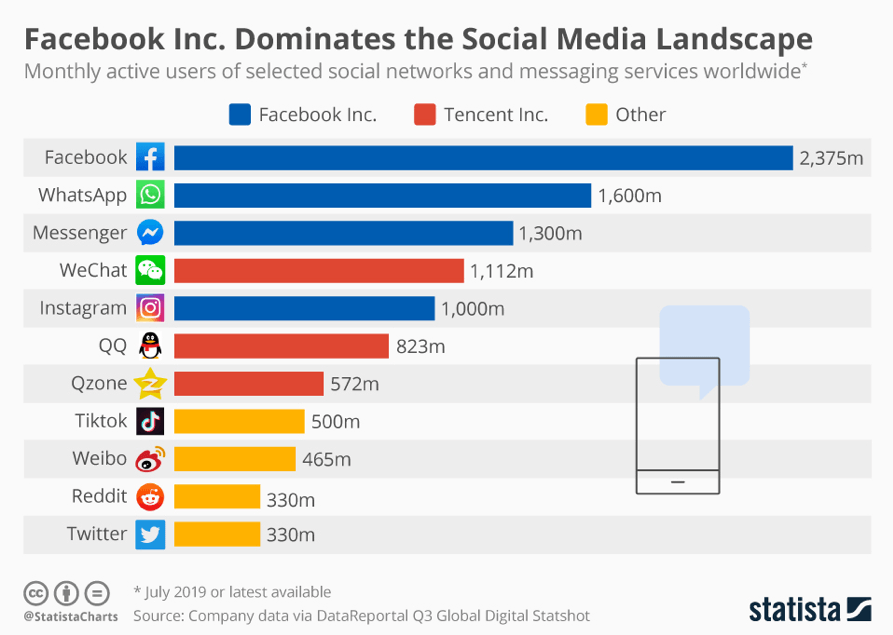Ecommerce is growing exponentially, if your ecommerce store isn’t you have a problem. To ensure your success, this article is concerned with the critical factors influencing your success in the coming year.
Don’t be complacent, there are many things prepared to trip you up, not least outdated technology vendors, who would have you believe what was great just a few years ago is still applicable now. The warning is, be careful what you wish for.

With new tech emerging every year to help your business grow, this coming year is set to be no different. As the economy stutters, many bricks and mortar retailers will be looking to ecommerce for a quick fix for what ails them; to derive fast growth and convenient shopping. If they’re looking to take a chunk off you, then what are you doing to protect yourself becomes critical.
This article discusses the key elements you need to cover, to ensure you’re on the right track for a successful year. If you want to succeed they must be included in your immediate marketing strategies.
Bolster your technology stack
With all the challenges encountered in the last two years, ecommerce has become the main route to market across most industries. However, for many years, lots of businesses have become accustomed to buying niche technologies without considering how they work.
There is likely to be more of a focus on ecommerce P&L, which will lead to teams needing to look at their current tools to see what can be removed so there is no duplication with pre-existing technologies already in use. As Donald Rumsfeld said “There are known-knowns, and unknown-unknowns”, even accountants can’t know what to implement unless the marketer points it out to them.
If you find that your platform is proving difficult to maintain and stabilise, this could be down to a high level of third-party integrations and a lack of customisation ability. By replacing it with a hybrid SaaS platform that is customisable and highly scalable, brands can manage stability effectively.
See the article: Choosing a Technology Stack for Ecommerce Development.
It’s not just social media – it’s omnichannel marketing now
Facebook and Instagram are the most popular social media platforms used by consumers when buying online. Retailers can reach these shoppers by setting up a Facebook shop and using it to create a shoppable Instagram page.

These platforms are designed with tools for listing products and creating ads that help to drive more sales. Social media now influences around 71% of consumer buying decisions, with customers four times more likely to spend more on purchases while also shortening their shopper journey.
As noted, creating an omnichannel experience needs to take into account how the individual interacts with your brand. It focuses not on the channel, but the experience as a whole. With this in mind, there are a few essentials when it comes to creating an omnichannel experience:
Data Collection
Collecting accurate, timely data about your consumers is essential to the implementation of an omnichannel strategy. This data will allow you to understand when your target audience prefers to interact with brands and on what devices, which type of messaging they are more likely to engage with, what products and features they are looking for, etc.
This data will be the driving force behind an omnichannel strategy. Brands need to make sure they have the tools in place to effectively collect this data across online and offline channels.
A smart way to do this is with Unified Marketing Measurement (UMM), an attribution model that combines the person-level metrics of multi-touch attribution, with the historic, aggregate measurements of media mix modelling. This way, touchpoints can be informed by individual preferences as well as historical trends such as regional or seasonal elements that affect engagements/conversions.
Data Analysis
Data collection is only the first step. Without a team and platform that can translate all of this big data into actionable insights, it is useless. Brands need to deploy an analytics platform that can distil all of this data in near real-time so that teams can course-correct while campaigns run, to meet consumer needs in the moment.
Customer Journey Mapping
Before launching an omnichannel campaign, organisations should be sure to create customer journey maps for each of their audience segments. The customer journey map evaluates the steps taken between the customer discovering the brand and purchasing from the brand.
Outlining these maps allows brands to create more targeted campaigns by considering individual interests, the user experience and interface, and factors outside of the brand’s control that may impact the path to purchase, such as economic factors.
You may enjoy our article: Contextual Marketing Being on the Money.
Brand Guidelines
Organisations need to develop a brand identity with clear guidelines for messaging and creativity. These guidelines should be adhered to across each channel to help facilitate brand awareness and recognition through a cohesive message. Another way that organisations can help facilitate an omnichannel experience is by leveraging brand tracking tools that can help measure and predict their brand’s health in the mind of the consumer
Testing / Optimisation
One of the most important components of an omnichannel marketing strategy is to continuously test the efficacy of your omnichannel approach. This enables the marketing team to determine ways to optimize campaign spend, messaging, creativity, and more.
Today’s organisations should utilise media planning tools that can run “what if” scenarios that take budget, target audience, multiple KPIs and media mix into consideration and in turn provide a highly granular media plan that can maximize ROI and inform future decision-making.
Visual commerce
Visual content is more popular than ever, with marketers pushing out their products and services through pictures, videos and user-generated content. Visuals are more interactive which makes them more appealing, and one of the primary reasons why businesses choose them over traditional ecommerce sites.
Having powerful visual components adds interest and personality to the products/services on sale and serves as an opportunity to distinguish a brand in competitive markets. By strategically developing innovative visual content that aligns with an established brand and immerses customers in the products, hesitant buyers are supported in their purchasing decisions.
Showcasing user-generated images and reviews also further elevates credibility, making products and services feel more familiar to potential customers.
Personalisation
Having a 360-degree view of the customer that enhances the buyer’s journey offers advantages for both large enterprises and customers. For the consumer, it’s convenient whilst for the company it establishes targeted Ecommerce which leads to higher conversion rates. Whether you’re a well-known or up-and-coming brand, personalisation goes beyond online sales and is about creating an experience that keeps customers coming back.
When customers visit a website and accept the Cookie Disclaimer popup, they have consented to data collection so expect brands to give them a personalised experience.
With competition in the market high, consumers may see personalised recommendations as a must-have. Because of this, the need for brands to create a personalised omnichannel experience has become vital. This means allowing the customer to order on a website and complete the process via a phone app or as a click-and-collect transaction.
Extend this further you quickly arrive at hyper-personalising your email marketing. It is critical to watch those usurpers of personalisation to suit their own pockets. You can personalise a segment, but its very name indicates it is a group of people lumped together by some commonality that sits ease of marketing.
Instead look to introduce hyper-personalisation, which is autonomous software that watches what each consumer buys and looks at and uses an algorithm to calculate their next most likely purchase.
With a suggested increase in ROI 20x more than traditional ecommerce, omnichannel marketing and email marketing combined (stats from Statista, McKinsey, Bain and Forrester agree), this is a solution that you cannot afford to ignore.
The Role of AI in Ecommerce Hyper-Personalisation
Advancements in technology, especially the increasing accessibility of artificial intelligence (AI) and machine learning, have been a major driver of hyper-personalisation.
Adding intelligence to the user experience can provide real-time assistance to users that simply isn’t possible manually.
That’s because machines can crunch data quickly, enabling real-time optimisations and scalability. Companies can utilise the collected and processed data to recommend hyper-personalised product selections to each customer in real-time and thus design an individual, user-oriented shopping experience.
For instance, say a transportation service has an app offering public transportation directions. Algorithms could determine, based on travel speed, if a user is walking, biking, or driving, then recalculate the journey with the appropriate timing.
For organisations that rely heavily on content, intelligence can help direct content creation by identifying gaps in information that visitors are searching for. Perhaps a financial company sees a rise in visitors searching for information around automating investments — information like this can help content creators prioritise the rising topics their actual customers are interested in.
Through natural language processing and machine learning, these trending topics can be identified quickly, without the hours of manpower that would be required to read through thousands of search terms and pull out trends. the fabulous news is the PPS software is completely autonomous so you don’t need any staff whatsoever, ever!
You may enjoy our article: Autonomous email marketing for greater profit.
Independent retailers
Consumers wanting to spend money with independent businesses is becoming not only popular but on-trend, so brands need to meet customers halfway by leaning into this trend.
Another reason this way of thinking has increased is that consumers now want to buy products from more purpose-driven, ethical brands that advocate sustainability. The focus on green consumerism is now a clear indicator that brands need to prioritise environmentally friendly practices in the coming years.
Independent retailers are also often able to have more control over their sustainability efforts, with lower volumes of orders and smaller processes giving them a competitive edge over their larger competitors.
What next?
These emerging trends have one thing in common, the end goal is to make a customer’s shopping experience easier and more enjoyable for them as all individuals. It’s all about hyper-personalisation.
You have to offer exactly what that individual wants when they want it. The good news is that personalisation serves many mistresses. It delivers a massive hike in average order value (AOV), which naturally compounds likewise into customer lifetime value (CLV).
If they are buying what they want, naturally your rate of return (RoR) falls through the floor. Profits grow, loyalty grows, and word gets around.





